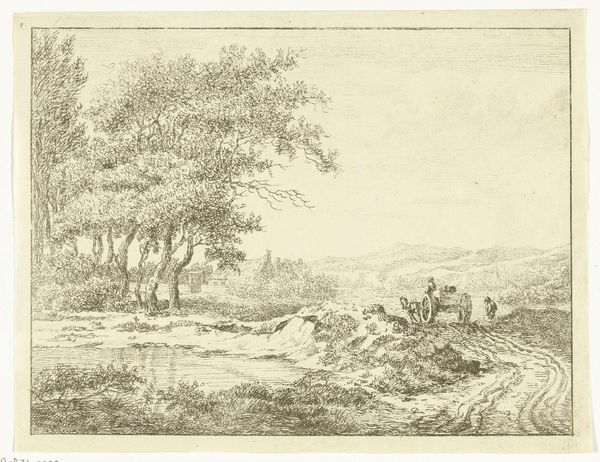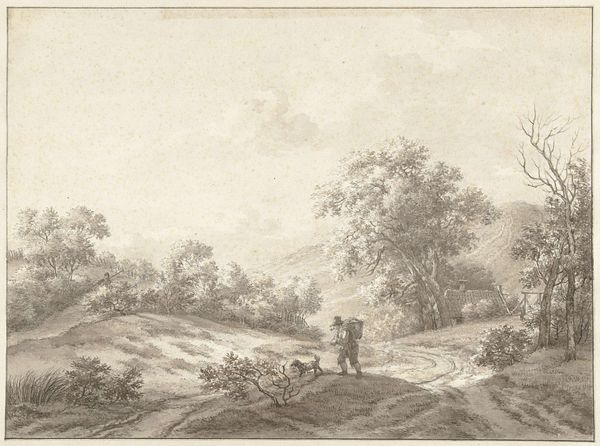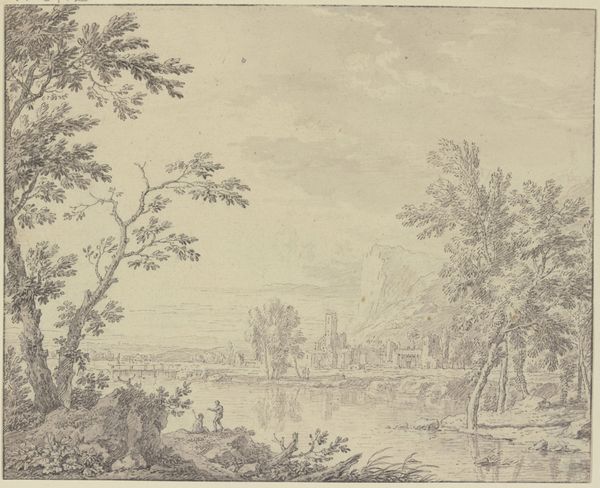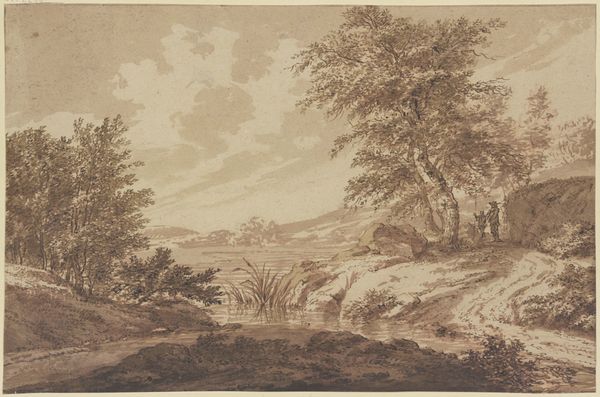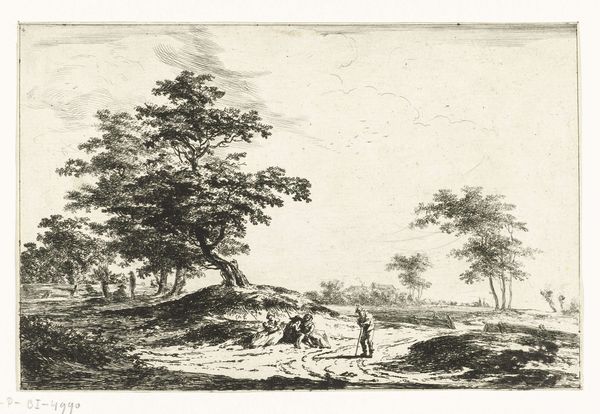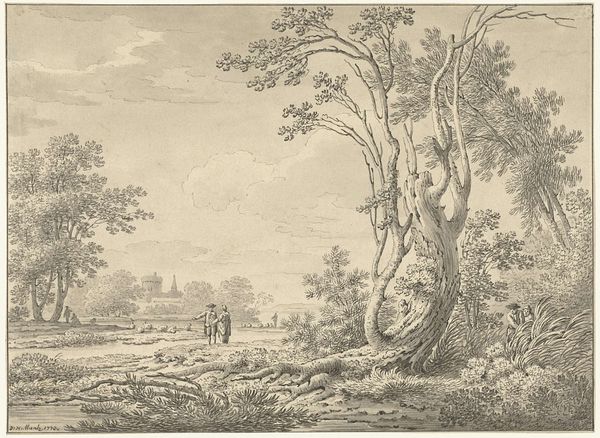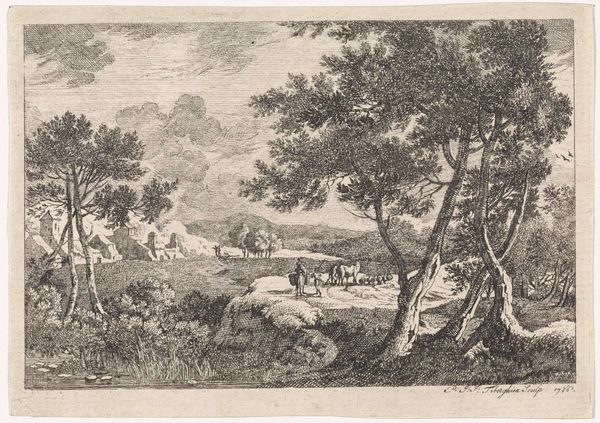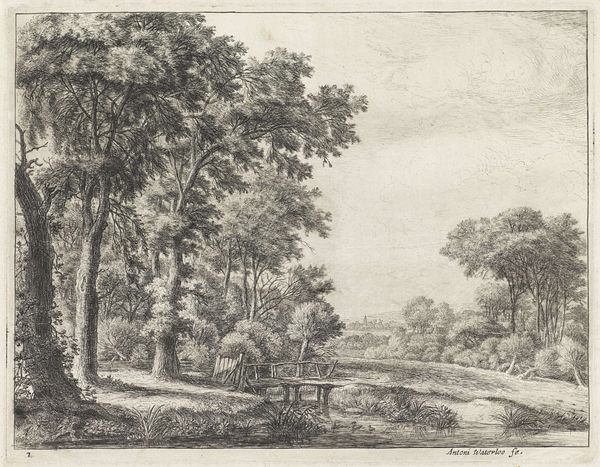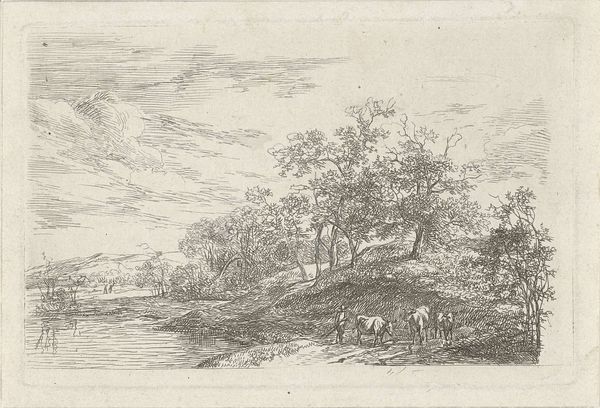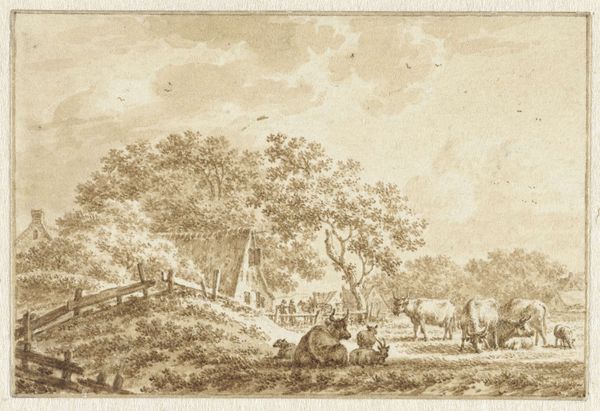
drawing, plein-air, ink
#
drawing
#
dutch-golden-age
#
plein-air
#
landscape
#
river
#
figuration
#
ink
#
pen-ink sketch
#
genre-painting
#
realism
Dimensions: height 183 mm, width 275 mm
Copyright: Rijks Museum: Open Domain
Editor: This is "Rivierlandschap met rustend vee," or "River Landscape with Resting Cattle," a pen and ink drawing made by Jacob van Strij sometime between 1766 and 1815. I’m really drawn to the calmness of the scene and the way the artist uses light and shadow to create depth. How would you interpret this work, focusing on its formal elements? Curator: A compelling question. Note first the artist’s delicate use of line to delineate form. Consider the sinuous contours of the resting cattle, for example. Observe how van Strij manipulates line weight to suggest volume and mass. Where lines are bold and decisive, we sense the presence of light, while the lighter strokes intimate shadow and recession. Then there’s the contrast between the densely worked area of the trees on the right versus the open expanse of the sky and distant river scene. Do you notice the subtle tonal gradations, the sepia washes carefully applied to build atmosphere and depth? Editor: Yes, the trees on the right side almost create a screen. How does this emphasis on line and composition affect the overall impact? Curator: By giving primacy to the formal elements, van Strij focuses attention on the inherent qualities of the composition itself. Notice the careful arrangement of shapes, lines, and tonal values, a sophisticated understanding of spatial relationships and visual balance. Editor: I see how the formal structure itself communicates meaning, it is more than just illustrating a landscape, and rather creating something in its own right. Thanks! Curator: Precisely. The dialogue between line, tone, and composition allows for a reading that transcends mere representational depiction.
Comments
No comments
Be the first to comment and join the conversation on the ultimate creative platform.
